To obtain a product with kimono sleeves to the details of the back and transfer to the rear and front of the sleeve. The basic base of the product with a sleeve of kimono is the basis for modeling the rod sleeves.

The shape of the lower slices of the kimono sleeves can be different. A solution of rejecting the reservoir of the blades is translated into the casing of the backrest of the base base, and to the target, a part of the breast paddling solution to elongate the armor is transmitted.
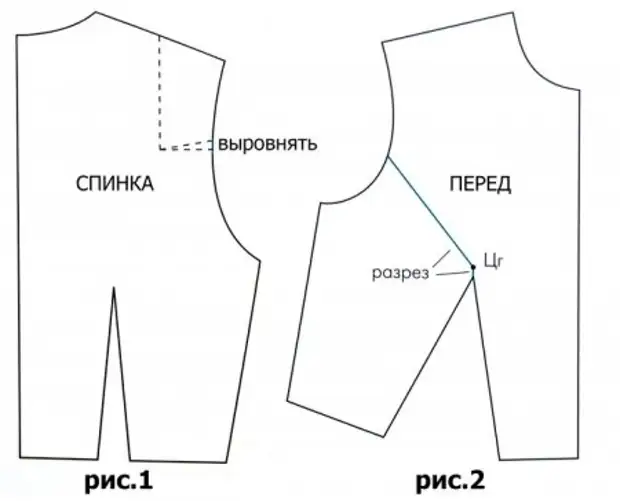
1. Copy the pattern of the backrest of the base base and move the removal to the bulk of the shoulder blades to the middle of the armhole (Fig. 1).
2. Copy the pattern of the base base. Draw the cuts of the cuts from the middle of the armor and from the end of the molding molding to the point of the breast center (Fig. 2).
3. Cut the pattern to the point of the center of the chest.
4. Raise the shoulder line of the back at the armhole by 0.6 cm (Fig. 3).
Using shoulder linings (shoulders) does not require additional shoulder boost.
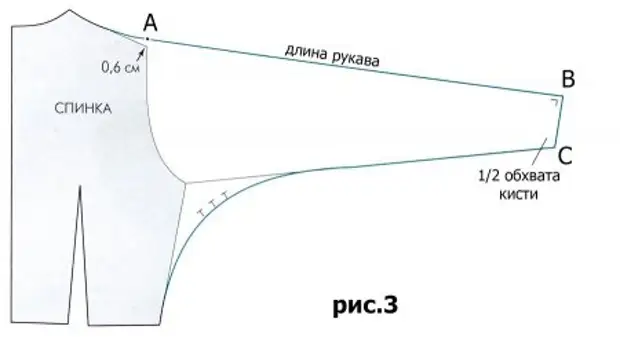
5. Attach the end of the long line at the point of the middle of the back of the back and draw through the back straight line, the length of which should be equal to the length of the sleeve (segment AB) - the upper cimono sleeve is obtained.
6. From the point in draw down perpendicular to the upper slice of the sleeve, the length of which is 1/2 from the size of the size of the brush girth.
7. From the point with the auxiliary line to the prugium.
Distribute the lower cut of the desired shape sleeve - a spike pattern is obtained, soloked with the back of a kimono sleeve.
8. Cut the resulting pattern and circle it on a sheet of paper, mark the basic line of the back of the back as a reference point.
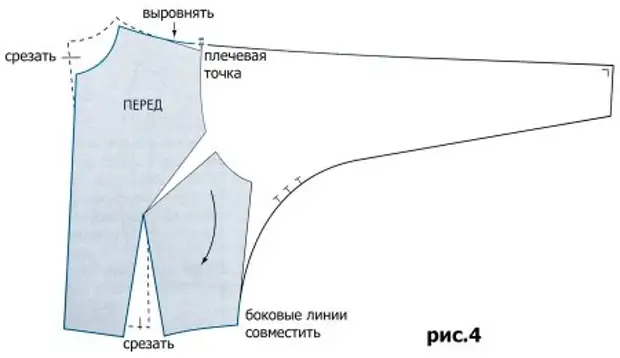
9. Position the pattern passed on the circled pattern of the back, align the shoulder line and via the stationery button to the shoulder point (Fig. 4).
10. Turn the side part until the bottom point of the side line does not touch the lower point of the side line of the back, single-circuit with the back of the kimono sleeve. Fix.
11. Circle the pattern from the middle of the shoulder, through the middle line to the side line of the transfer. Thus, the pattern is obtained, soloked with the front of the kimono sleeve. Remove the pattern pattern.
12. Cut the resulting pattern.
13. Put on the shoulder points and backs and indicate the direction of the bases of the base (Fig. 5).
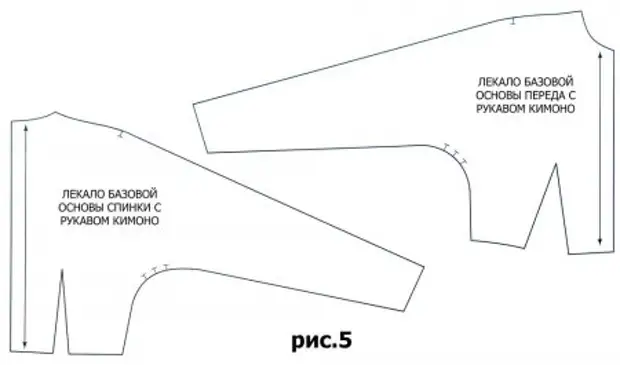
Short sleeve kimono
Kimono sleeves can be any length. Short sleeves of kimono, covering shoulders are always popular. Construction of this sleeve is shown on the illustration. Pay attention to the shape of the top slice of the sleeve. It is recommended to handle the sleeve sleeve with a sealing bag.
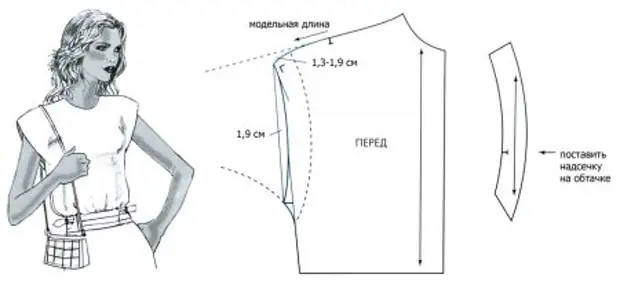
Sleeve Dolmana
Dolman's sleeve distinguishes a significant amount at the bottom of the prevention line of the armor and, accordingly, deep folds in this area, which allows you to highly raise your hand.
The basis for the modeling of the Dolman's sleeve is the basic base of the product with a sleeve of kimono.
1. Circle the patterns of the base and backs with a sleeve of kimono.
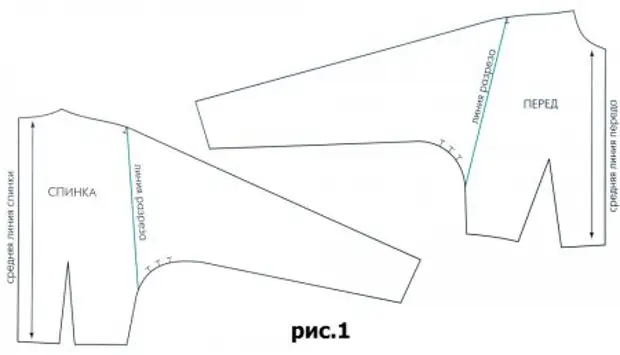
2. Spend the cuts of the cuts from the points located on the sidelines above the waist by 7.5-10 cm, to the shoulder points of the details.
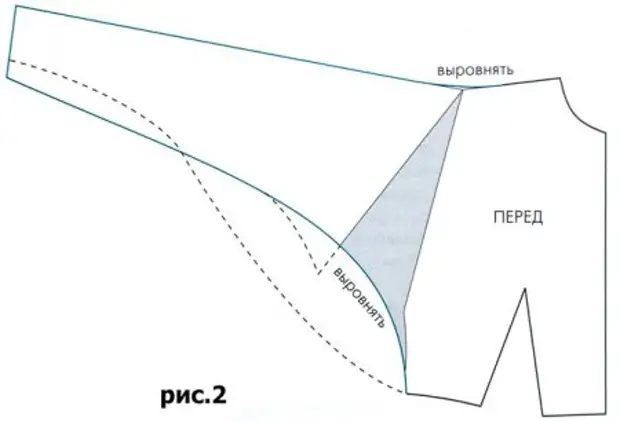
3. Cut the patterns and expand the cut parts of the sleeve, as shown in the illustration 2 (the extension value is optional). Align the lower cut. The solid and dotted lines show the possible shapes of the lower cuts of the Dolman sleeves.
4. Repeat these steps to get the backs pattern and align the lower sections relative to each other.
Kimono sleeve with one seam
To get a sleeve of kimono with one seam, you should combine the patterns of the back and transmission, one-piece with parts of the sleeve, on the surface of the sleeve or on the site of the shoulder sections.In the first case, the sleeve will be with an extract, directed along the shoulder, and the lower seam, in the second - only with the lower seam.
Options for the direction of the bases:
- In parallel, the middle of the transfer;
- on oblique;
- Along the upper seam (Fig. 1)
Kimono Sleeve with Walking Along Shoulder and Lower Swing
1. Fold the details of the transition and backrest with the sleeve of kimono so that the straight sections of the upper sections of the sleeves are combined. At the same time, the distance between the shoulder points of parts is 2.5 cm.
2. Circle the pattern.
3. Subscribe the sides of the cutting so that its end is located below shoulder points by 6.4 cm.
Sleeve Kimono with One Lower Switch
Fold the details of the transfer and backrest with the sleeve of kimono so that the sections of the shoulder sections of the sleeves are combined and circled.
Option 1 - the large amount of the sleeves at the bottom is silent (Fig. 2).
Option 2 - excess the volume of the sleeve at the bottom are cut (Fig. 3).
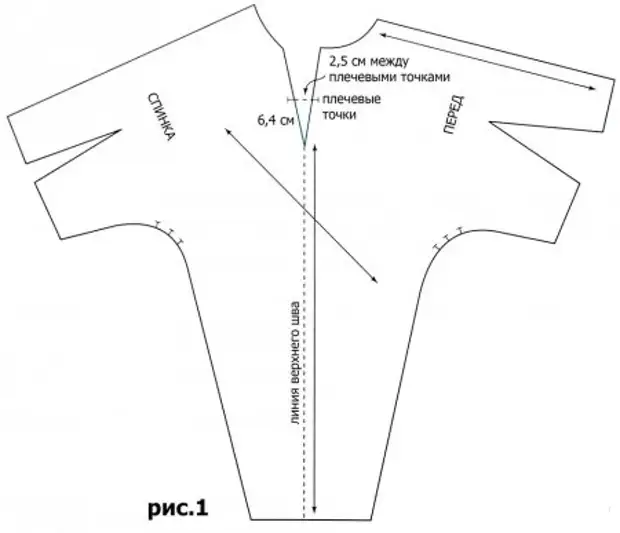
If the material is elastic, then the minimum sleeve width on the bottom should be equal to the wrist girth, if the material is not elastic, then the width of the bottom must be equal to the brush width plus an increase in free felting.
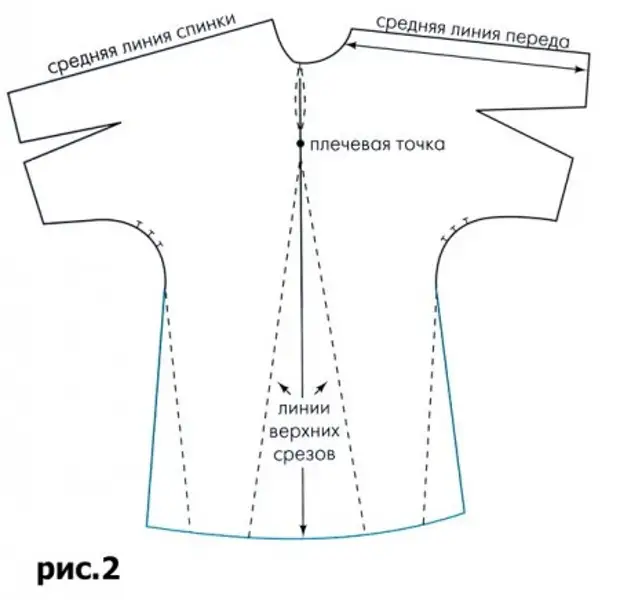
Specify the position of the middle of the sleeve, set aside from it half the value of the sleeve width at the bottom and draw the lines of the lower cuts, as shown in Fig. 2.
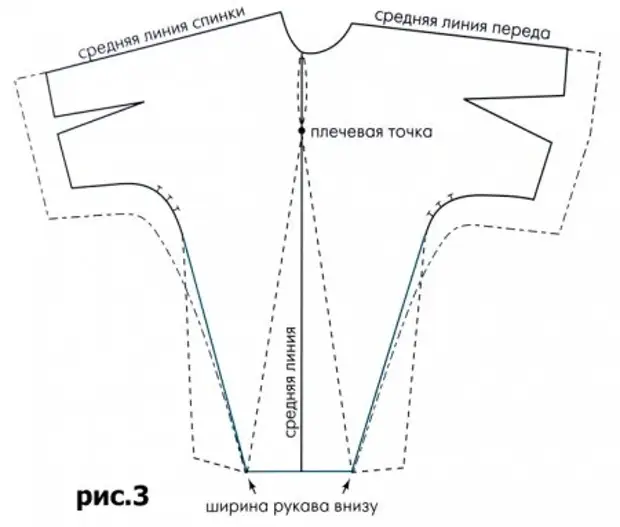
If the product is based on the bottom, then expand and extend it.
A source
